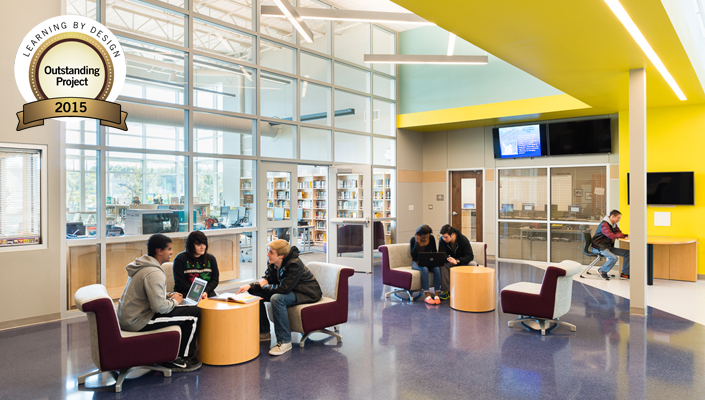Two Schools Earn National Design Recognition

Two new schools designed by O’Connell Robertson have been recognized for outstanding educational facility design in the 2015 edition of Learning by Design, a national publication that showcases innovative school design and construction projects. A peer-review jury evaluated all projects based on six criteria: Innovation, Community Need, Interior Design, Sustainability, Functional Design and 21st Century Learning.
The Sally and Mack Brown Rise School of Austin was one of just five projects that earned a Citation of Excellence Award based on high scores in all six criteria. The 25,000 square-foot Rise School is a unique pre-school that supports children with developmental disabilities while also integrating traditional learners. After researching the learning styles of children with Down Syndrome, the design team created an educational environment that meets the specialized needs of young learners with differing abilities. Jurors commented that the project was a “clear simple plan with excellent use of color and light” and “it was great to see clear attention given to users with these developmental challenges.”
“O’Connell Robertson’s design aesthetic on this project is really a reflection of our students and their needs. The integrative design elements throughout the school were aligned with the Rise School’s goals and objectives to enhance our early childhood population and provide the best learning environment possible,” states Emily Greer, director of the Sally & Mack Brown Rise School of Austin.
Success High School in Round Rock ISD received an Outstanding Project Award, recognizing that the campus exemplifies contemporary standards and contains design attributes one might emulate in a new space design. The new 68,000 square-foot high school supports non-traditional schedules and curriculum plans to serve students who desire acceleration, need evening classes to better fit their personal schedules, or are in at-risk situations. The facility provides flexibility to support varying curriculum and class sizes with a progressive learning environment that is sophisticated, approachable, and multi-functional. Jurors noted that the Success project has a “wonderful use of color and innovative approach to primary and secondary learning environments” and a “wonderful flexible design.”
“I cannot tell you how many visitors discuss the great architectural features of the building,” said Thomasine Stewart, principal of Success High School. “Thanks so much for giving my students and staff a great place to learn and work.”

